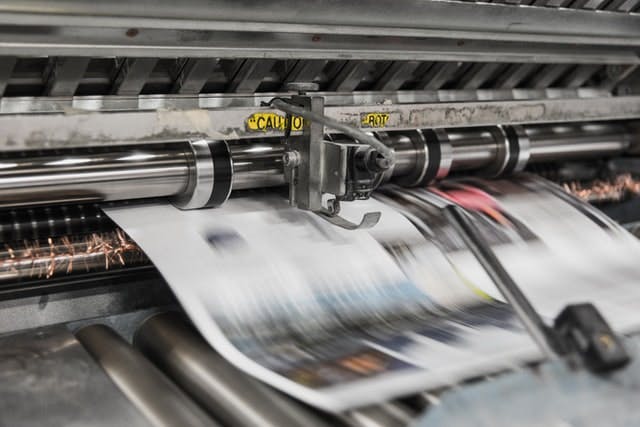Printed Labels Materials
Printed brand labels are a good choice for anyone looking for affordable and versatile labels. Printed labels are precise, easier to produce, and have more available design and color options. Printed labels easily capture small text and fine details, which makes them perfect for multi-purpose labels that need to display brand, size, and care & content all in one, or name labels for uniforms and childrens clothing.
Printed Labels can be produced on a range of different base labels such as polyester satin, Tyvek, nylon, cotton, and even linen. This gives you a lot of flexibility to choose a material which suits your needs.
When choosing your printed labels, look for products made with high quality printing inks. This will ensure that your labels will withstand general wash and wear and last a long time. Low quality inks can quickly begin to fade from the label which is less than ideal, to say the least.
Polyester Printed Brand Labels
Polyester satin is an especially popular option for care labels, but it’s also used as a branding or multi purpose label. It is soft and non irritating against the skin, which makes it perfect for inseams and waistbands.
Cotton Printed Brand Labels
If sustainability or 100% cotton materials are important to your branding then you will want to use organic materials instead of polyester. Cotton does not irritate the skin and its fiber is strong and durable. Cotton labels can contain a logo, lines of text, and/or care instructions.
Nylon Printed Brand labels
Just like polyester, nylon is a synthetic fabric. Nylon was developed as a synthetic alternative to silk, which is why it has a shiny and smooth structure. Nylon is elastic and water-repellent, does not crease and retains its shape. Nylon labels are best used for bathing suits, stockings and tights.
Linen Printed Brand labels
Linen is a sustainable alternative for 100% polyester care labels. Linen is made of flax, a natural fiber, and has a beautiful, natural look which matches well with linen clothing items. Linen is often used for summer clothes, such as loose-fitting trousers or outerwear.
Printing Methods
Choosing a printing method can be overwhelming if you are unsure of what to look for. Each printing method comes with its own set of pros and cons that need to be considered in your label design process. Find out what printing method will best work with your design, or how to tailor your label design around the printing method of your choice.
Digital Printed Labels
Digital offset printing, or sublimation printing, is a very fast and consistent option. This method uses a digital printer to print your artwork directly onto the base material. Digital printing works best with label designs that use a lot of saturated color or highly detailed imagery, (where other printing methods have physical limitations in those areas). It is important to find a digital printer that uses high quality inks since the amount of ink layered is very thin. This is important because that thin layer of ink can also mean they can fade quicker. As digital printing is done entirely through a computer, there are often less setup costs which makes digital printing ideal for small orders, too.

Flexographic Printed Labels
Flexographic printing is used to create sharp, vivid labels. Flexible rubber or polymer printing plates are laser engraved with the custom design, making them capable of displaying ultra detailed designs and small text. Flexographic label printing presses use water based inks, which are ideal for color matching. Plus the ink appears opaque on the base material and is long lasting.
Screen Printed Labels
Screen printing is one of the oldest methods of printing— a photosensitive coating or stencil is applied to a fine mesh screen so that when ink is passed through the screen, the design is transferred onto the label material of choice. Screen printed labels have the thickest layer of ink compared with any of the other methods, making them long lasting and weather resistant. Each color is printed using separate screens which means there are usually limitations of 3 or 4 colors maximum for a single screen printed label.

The Benefits of Printed Clothing Labels
Printed labels are a fast and affordable option. Your design will be printed exactly as-is, so there will be no surprises when your labels arrive. The base label is usually a choice between either polyester satin or cotton. Here’s a quick look at the benefits of custom printed labels:
- Unlimited colors: Digitally printed labels can be printed with as many colors as your design requires. This is ideal for highly detailed images such as photos, or designs with a smooth color gradient like rainbows.
- Speedy production times: Printed labels have a quick turnaround so custom orders can usually be produced and delivered fast, which is perfect for last-minute orders.
- Vivid, rich colors: The inks used in the printing process are highly saturated and vibrant, making printed labels a good choice for labels that stand out.
- Multi-purpose labels: Printing is the superior method for any small, detailed text. Choose a printed label for any care & content labels, or for multi-purpose labels that have it all – brand name, laundry instructions, origin, and size. This way you can get all the details in.
The Limitations of Printed Clothing Labels
Printed labels work fantastically well for designs that use lots of colors and have rows of small text, however they are typically considered far less luxurious and can be seen as more of a “cheap and cheerful” approach. Here’s a look at the limitations of printed labels:
- Less durable: Digitally printed labels will lose their fresh appearance more quickly from repeated contact to the surface of the label while wearing, washing, and tumble-drying.
- Color limitations on screen printed or flexographic printed labels: Both of these methods have much lower color limitations than even woven labels, often 3-4 colors max (however, this is not the case with digitally printed labels, which have an unlimited number of colors).
- Lower overall quality: Printed labels don't look or feel as high-quality as other types of labels. They will usually be thinner and better suited to items where the highest quality labels are less important—such as in children's wear or labels that are hidden within a product.











